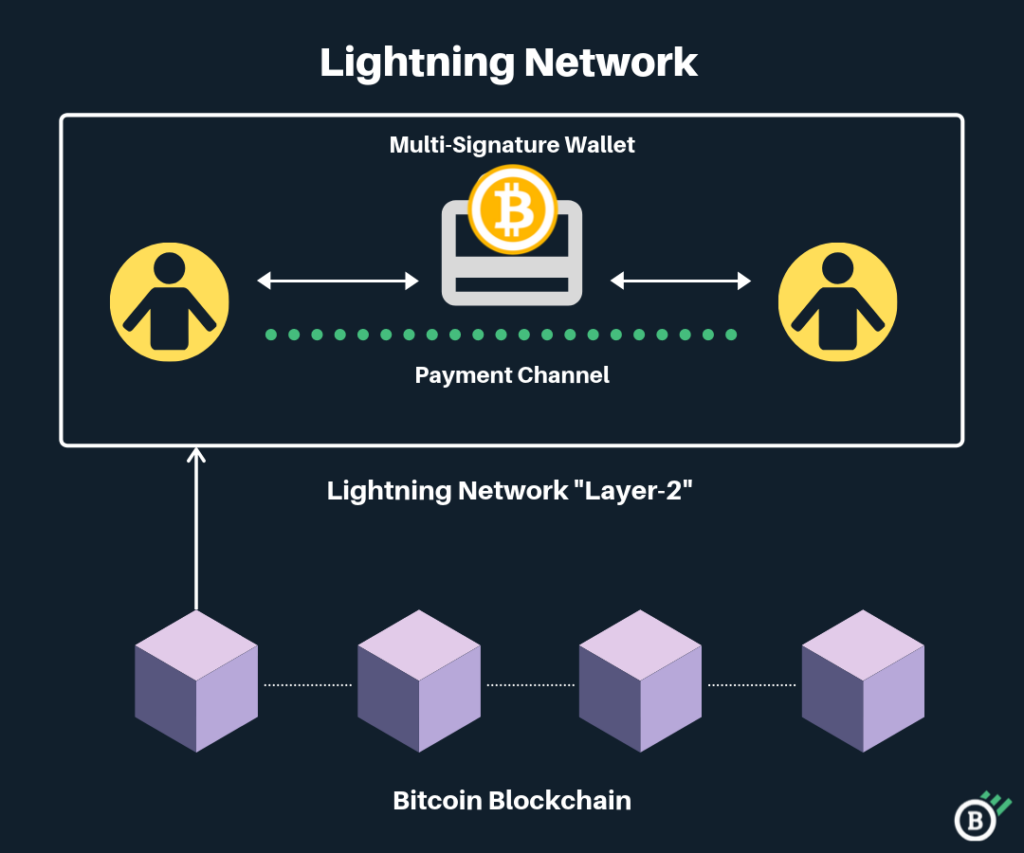Bitcoin Lightning Network
Empowering Bitcoin for Instant Microtransactions
Bitcoin, the pioneering cryptocurrency, has transformed the way we perceive and handle money. However, one of its initial challenges was its relatively slow transaction confirmation times and high fees. Enter the Lightning Network, a remarkable solution that has unlocked the potential for instant Bitcoin payments. In this article, we will explore how the Lightning Network addresses Bitcoin's speed and cost issues, making it a viable option for everyday transactions like buying a cup of coffee, while outperforming traditional credit card systems.
The Need for Speed
Bitcoin's original design prioritizes security through a decentralized network and robust consensus mechanism. While this design is crucial for its success, it resulted in transactions often taking around 10 minutes or more to confirm, making it unsuitable for quick, small-value payments. Additionally, transaction fees in the Bitcoin network can fluctuate based on demand, further impacting the cost-effectiveness of microtransactions.
The Lightning Network: A Swift Solution
The Lightning Network, conceived as a "second layer" solution, was designed to address these limitations while preserving the security and decentralization of the Bitcoin blockchain. It achieves this through the concept of payment channels.
How Payment Channels Work
A payment channel is essentially a private ledger off the main Bitcoin blockchain, where users can transact as frequently as they desire without incurring on-chain transaction fees for each action. These channels are established between two parties, and any number of transactions can occur between them without the need for settlement on the Bitcoin blockchain.
For example, imagine you and a coffee shop create a payment channel. You load a certain amount of Bitcoin into the channel, say $50, and you can make numerous microtransactions, such as buying a $3 coffee, without broadcasting each one to the Bitcoin network. These transactions are instant and essentially free.
The channel remains open until you decide to close it, at which point the final balances are recorded on the Bitcoin blockchain, settling all the transactions in a single on-chain operation. This mechanism significantly reduces congestion on the main Bitcoin network and saves on transaction fees.
The Benefits of Lightning
Instant Payments: With Lightning, transactions happen in milliseconds, allowing you to buy your coffee or make any small payment as quickly as swiping a credit card. This instant gratification is a game-changer for everyday transactions.
Cost-Effective: Lightning transactions typically incur negligible fees, making it more economical than credit cards for small payments. Traditional card networks often charge merchants a percentage of the transaction amount, making them less appealing for low-value purchases.
Scalability: Lightning enables Bitcoin to process a vastly increased number of transactions, effectively scaling the network without congesting the blockchain. This scalability is crucial for Bitcoin's adoption on a global scale.
Privacy: Lightning provides enhanced privacy since most transactions occur off-chain. This is in contrast to traditional credit card payments, which often involve sharing sensitive customer information.
Micropayments: The Lightning Network has opened the door to micropayments, allowing content creators, artists, and developers to receive tiny payments for their services or products.
Conclusion
The Bitcoin Lightning Network represents a significant step forward in making Bitcoin practical for everyday transactions. Its ability to provide instant, cost-effective, and scalable payments positions Bitcoin as a viable alternative to traditional payment methods like credit cards. Whether you're buying a cup of coffee or paying for digital content, the Lightning Network showcases the transformative power of innovation in the cryptocurrency space, bringing us closer to a decentralized, peer-to-peer financial future.


